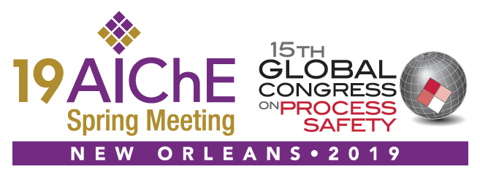

involving routine operations, maintenance, or repair in-order-to prevent personal injuries and illnesses, damage to facilities, harm to the environment as well as prevention of process related incidents. A consistent and systematic approach to hazard recognition can help workers understand risks more clearly and improve the efficiency and effectiveness of both process safety and occupational safety.
Establishing an effective safety culture requires solid hazard recognition and evaluation principles coupled with effective communication of process and occupational hazards. A hazard can be defined as the potential for an uncontrolled release of, or an unwanted contact with, energy that can cause harm to people, the environment, and/or equipment and facilities. In some circumstances, a loss or lack of energy can initiate events that result in harm from the interaction of other forms of energy. Both process and occupational hazards stem from the potential for energy transfer or transformation in an undesirable manner that can result in harm. The type and magnitude of energy are general characteristics that differentiate process hazards from occupational hazards.
Process hazards are potential catastrophic events such as loss of containment (uncontrolled release) of highly hazardous chemicals resulting in spills, toxic vapor clouds, fires, explosions, and other largescale events. These events can harm many people, the process unit, the processing facility, local communities, public areas, and the environment well beyond the facility boundaries. Process safety incidents often involve the shut-down of part or all of a process.
Occupational hazards are often viewed as localized circumstances that can injure or cause illness to one or more workers and may result in damage to the environment, equipment, or parts of a facility. The process itself may or may not be involved in these types of events. Energy contained within a process can certainly present occupational hazards to operators, maintenance personnel, and others who are required to work with the process.
A harm-producing incident cannot take place without an energy transfer or transformation. Understanding the energy associated with a process or job and preventing an uncontrolled release of energy or unwanted contact with energy is necessary to ensure that incidents are prevented – both process and occupational. An excellent model for understanding this relationship of energy to both process and occupational hazards is the The Management Oversight and Risk Tree (MORT).
MORT is a logic diagram that maps incident structure and includes energy as a prominent factor in all incidents. In Gate SA1 of the MORT diagram there are four conditions that are necessary for an incident to take place. An incident is not possible if any one of the four conditions is missing. Three of these conditions are: (1) the presence of potentially harmful energy, (2) the lack of adequate barriers and controls to manage the potentially harmful energy, and (3) the presence of vulnerable people or objects that can be exposed to the potentially harmful energy. The fourth condition is a sequence of events that leads to an uncontrolled release of energy, unwanted contact with energy, or incompatible interactions among the energies present. An incident occurs when people or objects are harmed because of this sequence of events.
Perceptions of risk vary depending upon a worker’s knowledge of energy and whether the worker is focused on process or occupational hazards. This creates a need for common terminology about hazards so that the risk associated with a process or job can be effectively communicated, especially when process and occupational hazards are present simultaneously. Knowledge of the energy involved in a job or process is paramount to determining possible harmful outcomes.
A pillar of process safety is to help workers effectively answer risk-based process safety questions. “What can go wrong?â€, “How bad could it be?â€, and “How often might it occur?†are rooted in identifying and evaluating the energy involved in a job or process. Teaching workers how to use a simple and effective energy-based hazard
recognition tool for both process and occupational safety provides an efficient and effective way to improve process and job knowledge. This will result in improved hazard identification competency, risk reduction plans, and communication among work groups with respect to hazards, risk evaluations, and subsequent risk reduction actions.
Presenter(s)
Language
Pricing
Individuals
| AIChE Member Credits | 0.5 |
| AIChE Pro Members | $19.00 |
| Employees of CCPS Member Companies | Free |
| AIChE Graduate Student Members | Free |
| AIChE Undergraduate Student Members | Free |
| AIChE Explorer Members | $29.00 |
| Non-Members | $29.00 |
